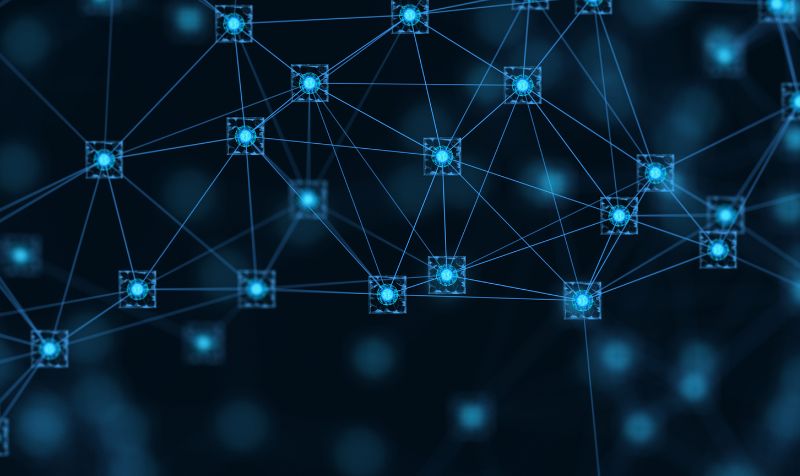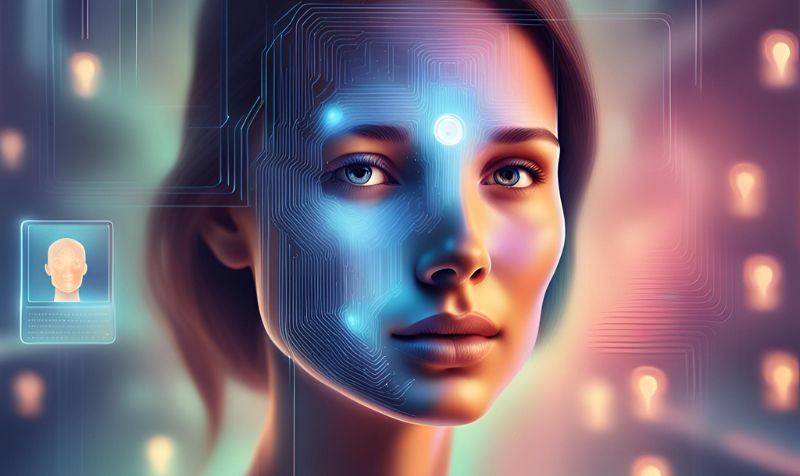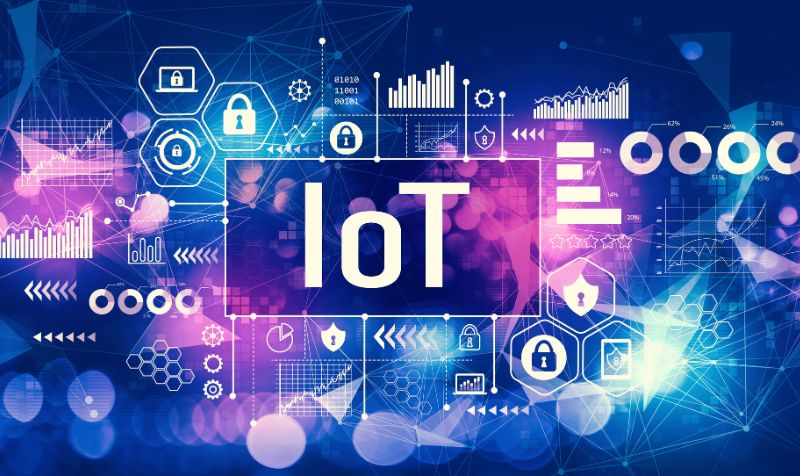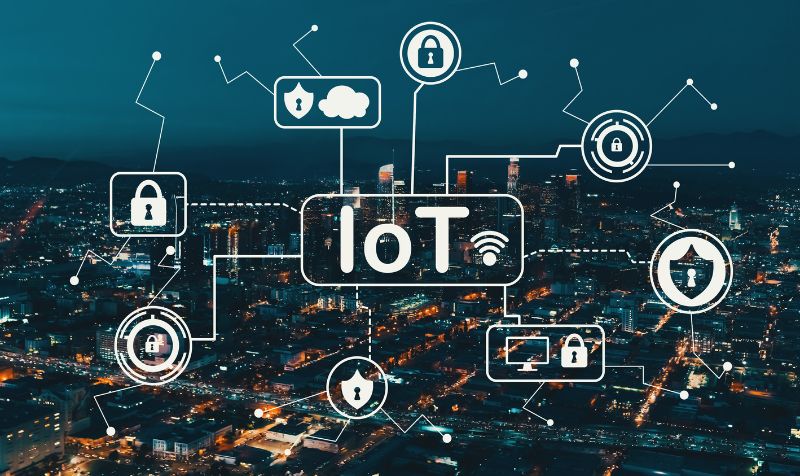
What is machine learning with example?

Machine Learning: Exploring Concepts and Real-World Applications
Expected to skyrocket from $21.17 billion in 2022 to an impressive $209.91 billion by 2029, machine learning (ML) stands as a transformative powerhouse, enhancing various facets of our daily lives.
The growing popularity of machine learning technology in recent years is mainly attributed to significant advances in computer science and statistics, improved quality and quantity of datasets, and the development of neural networks.
In this post, we’ll explore what machine learning is through examples, and we’ll also look at how it’s used in different industries to give you a clearer picture. Let’s dive in!
Table of Content:
1. Machine Learning: A Brief
2. 10 Real-life Examples of Machine Learning to Explore in 2024
- Facial Recognition
- Healthcare and Medical Diagnosis
- Recommendation Systems
- Virtual Personal Assistants
- Financial Sector
- Chatbot or Online Customer Support
- Stock Market Predictions
- Cyber Threat Detection
- Transportation Optimization
- ML for Education
3. The Future of Machine Learning: Way Forward
4. FAQs
Machine Learning: A Brief
Machine learning, a specialized branch of artificial intelligence (AI), refers to an umbrella term for a specific set of tools and techniques that help software systems learn and adapt on their own. Various machine learning algorithms help artificial intelligence learn without being specifically programmed to perform certain actions.
The highlight of machine learning technology is that by learning a pattern from sample inputs, the ML algorithm predicts and performs different tasks solely based on the learned pattern instead of a predefined program instruction.
10 Real-life Examples of Machine Learning to Explore in 2024
Studies show that over 57% of respondents in a survey stated that customer experience represents the top ML and AI use cases.
Now, let’s discuss some common customer-centric machine learning examples and applications across industries:
1. Facial Recognition
Facial or image recognition is one of the most common examples or applications of machine learning. Image recognition is simply a method for cataloging an object in a digital image.
It is a well-known machine-learning technique today that appears in our day-to-day lives. Such is the popularity of the technique that the market size in the facial recognition market is projected to reach a phenomenal US$4.94bn in 2024.
Unlike earlier, when people received name suggestions for their photos on mobile and Facebook tagging, ML allows you to immediately tag and verify someone by comparing and analyzing patterns through facial features or contours.

Put simply, ML allows programs to identify an object or person in an image depending on the intensity of the pixels. This kind of facial recognition is used for various password protection methods, such as facial ID recognition and in law enforcement.
Likewise, facial recognition paired with deep learning technology has become instrumental in healthcare to help detect various genetic diseases or track a patient’s use of medication with much greater accuracy.
2. Healthcare and Medical Diagnosis
When it comes to healthcare, Machine learning primarily deals with various prognostic and diagnostic issues. This includes patient monitoring and management, disease breakthroughs, detailed medical data analysis, management of inappropriate medical data and more.
In addition to this, healthcare professionals also use chatbots with text-to-speech recognition capabilities to identify patterns in symptoms. Below are some of the other common uses cases of medical diagnosis using ML:
- Assisting in recommending a treatment plan or formulating a diagnosis. A recent PWC research also confirms that ML-based medical diagnosis is among the top three areas with the biggest AI and ML potential in healthcare.
- Medical fields such as Oncology and pathology use machine-learning technology to recognize cancerous tissue
Likewise, in the case of rare diseases, the combined use of facial recognition software and machine learning technology can help scan patient images and identify phenotypes that correlate with several rare genetic diseases.
3. Recommendation Systems
The recommendation system is another popular application of machine learning, as product recommendations are featured on most e-commerce websites, including Amazon.
Various Machine learning models allow websites to track your behaviour to be able to recognize patterns in your previous purchases, browsing history, and shopping cart activity. This kind of data collection is used for pattern recognition to predict specific user preferences.
Several popular organizations, such as Netflix or Spotify, use similar machine learning algorithms to recommend TV shows or music based on your previous listening and viewing history. With time and training, these ML algorithms aim to understand your unique preferences to accurately predict what kind of music, TV shows, or films you may enjoy.
4. Virtual Personal Assistants

Smart or virtual personal assistants help users access the information they need via voice or text. As soon as there is a query given to an ML-based software system, the virtual assistant collects relevant information by either doing a quick search for it or recalling the same type of questions a user has asked in the past.
For instance, virtual assistants such as Siri, Alexa, and Google Assistants are great examples of ML technology used in daily life to carry out activities such as setting alarms, setting reminders, checking the weather, and more.
Likewise, other well-known machine learning techniques involved in voice assistants include speech-to-text conversion and natural language processing.
These voice-based smart assistants have several benefits, including making visually or physically challenged people more independent and bringing people together.
5. Financial Sector
Today, an increasing number of financial organizations and banks use machine learning technology to efficiently deal with fraudulent activities and draw deeper insights from massive volumes of data.
These kinds of ML-derived insights help in identifying various investment opportunities that allow investors to decide when to trade.
Furthermore, several financial institutes have already partnered with popular tech companies to take advantage of the benefits of machine learning. This is also the reason the global market for AI and ML in BFSI is projected to reach $15,32 billion by 2028, growing at a CAGR of 29.6% during 2022–2028.
6. Chatbot or Online Customer Support

A chatbot is one of the most widely used pieces of software in almost every industry, including banking, medicine, health education, and more. In banking, an increasing number of organizations use chatbots to provide quick online support to customers.
These chatbots work on machine learning concepts. The programmers feed chatbots some basic questions and answers based on frequently asked queries.
This means that whenever a customer asks a query, the chatbot recognizes the respective keywords from a database and accordingly offers an appropriate solution to the customer. This helps them provide quick and fast customer service facilities to customers.
7. Stock Market Predictions
Predictive analytics and algorithmic trading are some of the common machine learning use cases in industries such as product development, finance, and real estate.
Machine learning technology is used here to classify data into groups and then define them with specific rules set by data analysts. After this classification, analysts can calculate the probability of an action.
These are important machine learning methods that predict how the stock market will perform based on yearly analysis. Likewise, analysts can also use predictive analytics-based machine learning models to predict the stock price for 2025 and beyond.
8. Cyber Threat Detection

The capability of machine learning algorithms to analyze difficult patterns within huge volumes of activities to identify analogies as well as determine normal behaviors makes it a robust tool for identifying cyber threats.
Apart from this, ML’s capacity to continuously learn lets it refine its understanding of an organization’s information technology environment, usage patterns, and network traffic.
This means that even as the organization gets more technology-driven with an increased number and complexity of cyber attacks, ML algorithms can improve their ability continually to identify any kind of unusual activity indicating a cyber threat.
9. Transportation Optimization
An increasing number of organizations working on making the transportation industry more technology-driven are leveraging machine learning as their primary source.
For instance, ride-hailing apps such as Ola and Uber use machine learning throughout their product lifecycle, from planning optimal routes to deciding prices.
Likewise, dynamic pricing in travel uses ML technology to adjust traveler prices to ever-changing market conditions. The prices here vary based on factors such as time, weather, customer demand, location, etc. Another example of machine learning in transportation is helping drivers find the most optimal route from point A to point B.
10. ML for Education
NLP technologies such as ChatGPT are well known for academic writing and research, but machine learning has several more use cases that support educational initiatives. Some of these are:
- Tutoring: ML algorithm can increase access to tutoring for students who need support by creating relevant study materials and personalized knowledge checks
- Intelligent courses: Coming-age AI and ML technology can support educators in various initiatives, such as research and organization of the required elements of a course.
The Future of Machine Learning: Way Forward
Machine learning is one of the most remarkable technologies in the field of artificial intelligence. In this post, we have discussed several real-world examples and use cases across industries as well as in daily lives.
The future will further observe more practical machine-learning use cases and applications, exploring various new technological advancements. Additionally, there will be a focus on enhancing the interpretability and transparency of machine learning models. This will primarily address the black-box nature of some algorithms; it will be crucial for gaining trust and acceptance, especially in critical domains like healthcare and finance.
If you are interested in learning the latest machine learning skills and use cases, look no further than IEEE. At IEEE, you can explore a wide range of machine learning courses, designed to equip you with the latest skills and expertise needed to thrive in this dynamic field.
FAQs
1. What is the best example of machine learning?
Image recognition is the best and most widespread example of machine learning. Some use cases of image recognition include labeling an X-ray as cancerous or not assigning a name to a photographed face.
2. What is ML used for?
ML is used for analyzing and interpreting patterns and structures in data to enable accurate prediction, learning, and decision-making without human intervention.
3. What is a machine learning sample definition?
In machine learning, samples help you measure all variables in the data set and are divided into training, selection, and test samples.
Post Tags : Examples of machine learning Machine Learning
Share:
Social Media
Most Popular
Subscribe To Our Weekly Newsletter
Categories
Filter by tags
-
what is cloud computing
-
Visualization in cloud computing
-
smart contracts
-
sensors
-
Regression in machine learning
-
Python programming
-
Python developer salary
-
Python
-
protocols
-
ML
-
Machine learning MCQ
-
Machine Learning
-
IoT with examples
-
IoT sensors
-
IoT device management
-
IoT
-
Internet of things
-
How to learn python
-
Healthcare
-
Hands-on machine learning
-
Examples of machine learning
-
Ethereum
-
Decentralized
-
cryptocurrency
-
Cloud Computing
-
Cloud
-
Blockchain developer salary
-
Blockchain
-
Bitcoins
-
Bias in machine learning
-
Artificial Intelligence
-
Actuators in IoT
-
actuators
-
5g
Related Posts

What is IoT and How to Learn IoT: A Definitive Guide (2024) – Copy
The blockchain market has immense potential, accompanied by staggering job opportunities, as evidenced by recent statistics. By 2023, worldwide expenditure on blockchain solutions is projected

What is IoT and How to Learn IoT: A Definitive Guide (2024)
Introduction The first question that comes to mind is, “What is the full form of IoT?” IoT stands for the Internet of Things, which refers

What is Blockchain 101: A Definitive Guide
Blockchain is quickly becoming a buzzword in various industries. This technology was popularised with the advent of Bitcoin in 2008. However, blockchain applications have gone

IoT Courses: From Free to Paid All Included [Updated 2024]
Introduction In this comprehensive guide on IoT courses, we will explore the field of the Internet of Things and its valuable skills for career advancement,
